Miuccia Prada is regarded as one of the most influential and enigmatic fashion designers of modern times. For nearly four decades she has displayed her penchant for setting trends and bucking the ideas of her fellow designers. The now 71-year-old together with her CEO partner Patrizio Bertelli have transformed what was essentially a small family business into one of the world’s most renowned multi billion dollar fashion houses.
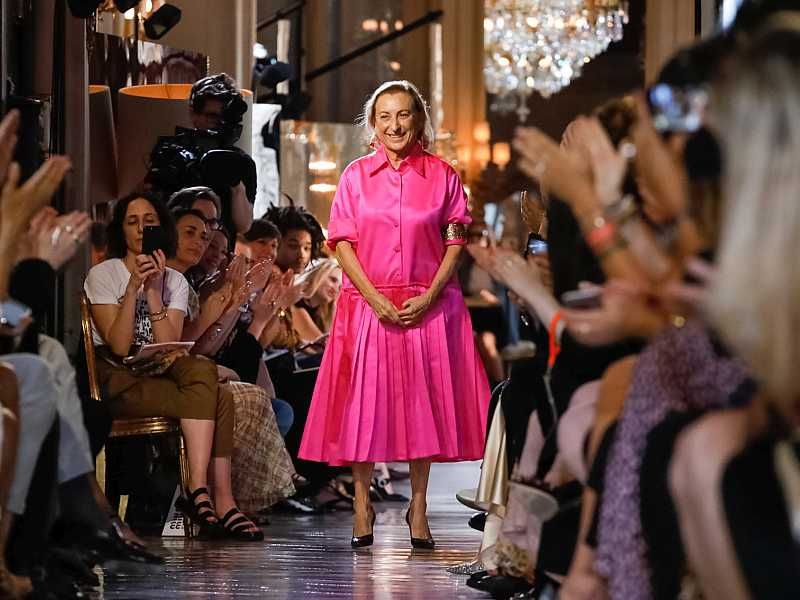
Miuccia Prada is a true iconoclast, and one who never ducked a challenge, under her auteur like direction Prada has blended the old and the new, the ugly and the sublime, the vulgar and the simple, to show off a smorgasbord of original and often unexpected ideas. No two collections have ever looked even vaguely the same, and it’s obvious to any fashionista watching that each well thought-out garment detail has come from one great mind.
And the irony of it all is that the Prada renaissance under Muiccia started in 1985 with a choice of an unassuming fabric for her bags. Miuccia could have followed the likes of Louis Vuitton by brandishing a leather design with multiple gaudy logos, but instead, Prada went in a completely unheard of direction: choosing a fabric and feel that screamed function rather than fashion.
Pocone— was a military-grade nylon that was used by Prada’s grandfather to cover trunks— and it was the key to Miuccia Prada’s first breakout success. It was the last thing that should have worked for a designer handbag, but work it did. Starting with a series of waterproof backpacks, Prada eventually moved onto totes, handbags and more all including a small black triangle bearing the Prada logo.
Within months, the Pocone bags and backpacks were a global phenomenon, collected, worn and lusted over by the fashion cognoscenti the world over.
The Pocone nylon backpacks were unlike anything else on the market: minimalistic, clean and simple, with the appeal of functionality. The “Vela” bags were born out of Prada’s disdain for the bags of other luxury competitors, which she deemed too formal and traditional. The selling point was the material: industrial nylon, which Prada sourced from factories producing the light-weight, waterproof fabric for military parachutes.

What resulted was a complete transformation of what it meant to produce luxury goods – Prada managed to create the most sought-after designer bag, using perhaps the least luxurious material. The nylon bags were a symbol of modernity – it allowed luxury to be subversive and go beyond the superficial. Luxury goods were no longer just a stuffy status symbol, they were also modern and signifiers of a new kind of thinking style setter.
The Prada brand, which belongs to one of the smaller conglomerates in the fashion industry, the Prada Group, first began in 1913, when brothers Mario and Martino Prada began a family leatherwoods business. It was known as Fratelli Prada. The business was known for their bags, trunks and steamers. Years later, Prada became the official supplier of the Italian Royal House, allowing the business to display the House of Savoy coat of arms in their seal. It quickly became a symbol of wealth and aristocracy, used by only the upper echelons of society. Mario and Martino Prada believed that women should not be in control of the business, however, Mario’s daughter Luisa became his successor and took control of the business for 20 years.
The revolutionary force behind the Prada we know today is Miuccia Prada, granddaughter of Mario Prada. Born in 1949, Miuccia Prada grew up conservatively in Milan. Foreshadowing her impact on the family’s eponymous brand, Miuccia Prada’s formative years are evidence that she was cut from a different cloth. She received her doctorate in political science from the University of Milan, inspired by her travels to France, England and Ireland during her childhood and adolescence. She was famously a member of the Italian Communist Party, riding on the rebellious sentiments of Italian youth movement in the 60s who felt disdain at the state of a newly modernised, capitalist Italy.
She went on to study at the Piccolo Teatro for a few years, feeling inspired by the culture boom in Italian cinema. During her time at university, Miuccia Prada campaigned for women’s rights, and was vocal about reproductive rights and accessible childcare. Prada often talks about the conflict of being a radical feminist and someone involved in fashion at the same time, but this dichotomy would be integral to her identity.
Despite Prada’s success, she never intended to get into fashion. Politics was her initial raison d’être. In the 70s, she was awarded a PhD in political science and later spent five years training to be a mime artist. “You know, I had to have a lot of courage to do fashion,” she once said, “because in theory it was the least feminist work possible.”
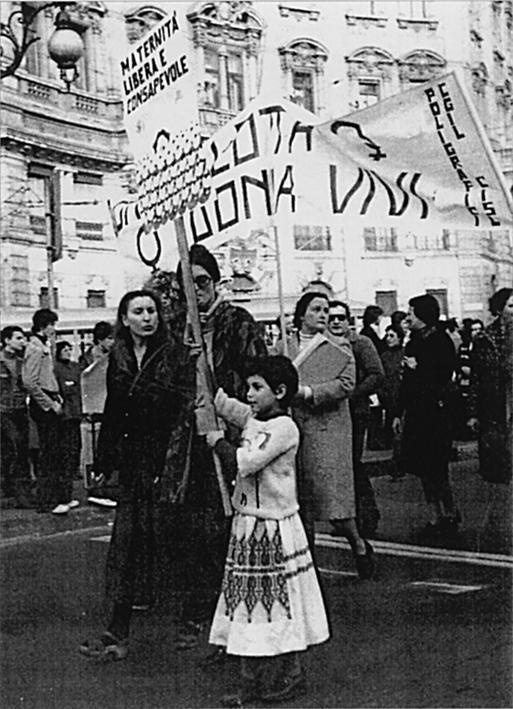
She famously claimed that while her friends went to protest in jeans and sneakers, she would wear skirts and Yves Saint Laurent Couture. Her willingness to go against the grain and her understanding of women would come to define her aesthetic: ultimately, she transformed Prada into a brand characterised by disruptive innovation, whilst simultaneously always having the female figure at the forefront of the design.
Despite her love of revolutionary politics ultimately, the lure of the families fashion business could not be resisted, and Miuccia Prada found herself working with her family. In 1978, she took over the company after two decades of her maternal mother at the head of operations. Miuccia Prada took over the design of the company’s signature products: leather goods. Her initial attempts consisted of a luggage line and various footwear designs, which saw little success.
Behind the scenes, there was someone else destined to drive the success of the brand. Patrizio Bertelli, fashion entrepreneur and once a rival of the Prada family as a maker of leathergoods, wed Miuccia Prada in 1978. The partnership was one of dreams: Bertelli would come to be the mastermind behind the brand’s business strategies, while Prada focused on the creative side. It was Bertelli that inspired Prada to move beyond accessories and begin designing clothes, and Prada had released a ready-to-wear womenswear collection in Fall/Winter 1998.
The debut collection by Miuccia Prada is a marker of the brand today, consisting of silhouettes inspired by mens tailoring: oversized and boxy, yet designed with women in mind. The collection was an ode to Miuccia’s background in politics and her desire for the subversive, even claiming that her fist collection was “uniforms for the slightly disenfranchised.” The collection certainly had an element of uniformity: the pieces were designed as workwear, ranging from brown, a colour rarely seen on the runways at the time, to bolder reds and pinks. In the fashion community, the collection was not met with unanimous acclaim: it was deemed an aberration by the traditional luxury crowd, but also too banal for avant-gardists.
Miuccia Prada drew on her personal influences as inspiration for the collection: pieces reminiscent of school uniforms, accompanied with a hint of rebelliousness, and of course, all set in a classic Italian salon inspired by the cinema of the 60s. The ethos of Prada was therefore stated for all the see in her debut collection – a statement she would continue for her career, constantly changing the way people would perceive luxury and fashion.
But Prada resonated with the everyday woman, and it differentiated themselves from other luxury houses with their effortless and understated pieces. Fabio Zambernardi, design director of Prada, once said, “At the start, there was Versace, there was Armani, and everything was much more loud than what Miuccia was doing.”
It was the 90s when everyone had their eyes on Prada, an era where Miuccia Prada was pioneering “ugly chic,” and challenging ideas of what a beautiful woman had to wear. New materials like nylon were brought onto the runway, colours were muted and dull and traditional silhouettes were left at the door. It was in stark contrast to the simple yet sexy looks that dominated the runways at the time, like the work of Tom Ford for Gucci in the 90s, characterised by bias cuts and revealing silhouettes. The term “ugly chic” was given to Prada by fashion critics and is perhaps best embodied in the Spring/Summer 1996 Collection, titled “Banal Eccentricity.”
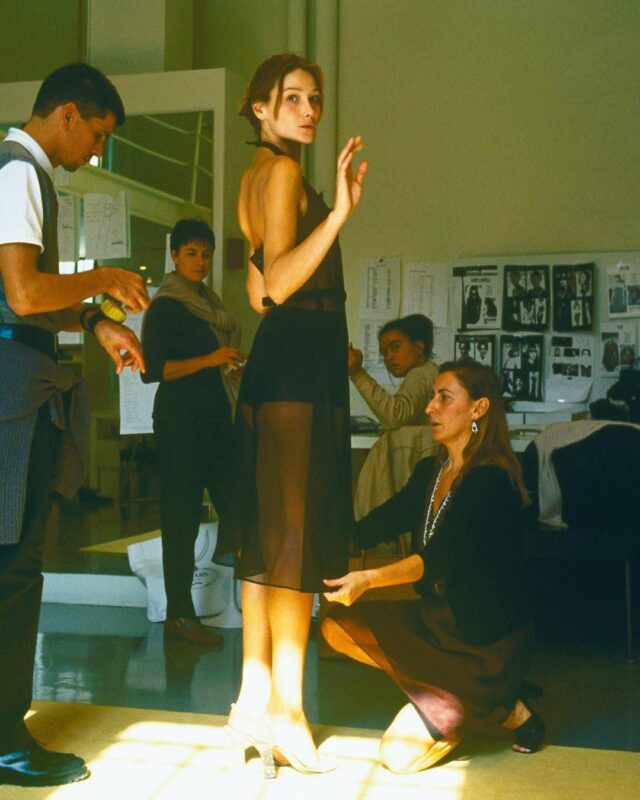
Models wore famously librarian-esque skirts, that looked stiff and had little movement, and colours like mustard, chartreuse and lilac. The patterns were reminiscent of wallpaper and curtains and were accompanied with chunky slides and low-heeled sandals. This was the era of the supermodel, and 90s icons like Kate Moss, Kirsty Hume and Carolyn Murphy wearing seemingly ugly clothes helped to defy the standards set by other luxury houses at the time. The collection shocked the fashion world, but also transformed it: fashion experts say it created a sartorial shift that had people seeking out the past and the vintage, and willing to depart from ideas of the “traditionally beautiful.”
Miuccia Prada once said that, “ugly is attractive, ugly is exciting. Maybe because it is newer.”
In recent years, “ugly chic” has manifested in different ways and the term has become synonymous with the brand’s tendency to be subversive. The collection of Spring/Summer 2014 was an outward display of Miuccia Prada’s feminist beliefs, celebrating the strength of women. The collection was a mixing and matching fabrics like fur, jewels and knitwear, as well as having a diverse colour palette of khaki, blue, bright red, yellow and green.
The sportswear-inspired collection was heavy and bold, especially for the summer, but perhaps the most important aspect was the overlay of bralets onto the pieces. In doing so, she reframed the intimate as something to be seen, rather than hidden, and commenting on the autonomy of women. The juxtaposition of utilitarian clothing with quintessentially feminine pieces is something Miuccia Prada does often, seen again in Autumn/Winter 2016, where “ugly chic” is seen in the printed argyle tights and brocade patterning. Prada keeps her touch of femininity by cinching in the waist of an oversized, boxy coat with a bustier, a silhouette that is quintessentially Prada.
However, Prada goes beyond their association with “ugly chic,” and Miuccia Prada is renowned for her reflexivity and pragmatism. Miuccia Prada reminds the fashion world that Prada can still do sexy with the 2002 Fall Collection, which featured tight skirts, fur bombers and see-though vinyl jackets. It featured the classic influences of workwear and men’s-inspired coats, but the collection was notably more sophisticated, and was born out of Miuccia’s desire to prove everyone’s misconceptions about Prada wrong.
She would continue to reference traditional femininity in later collections, like the Autumn 2008 collection, with classic ladylike silhouettes were combined with lace. Miuccia Prada also defined the norms with her kitschiness and her ability to put colours, prints and materials together. It was this that would produce some of the most iconic styles that Prada is known for, like the flame heels featured in the Spring/Summer 2012 collection. The “Hot Rod” heels, quickly because a fan favourite and were even re-released years later. Another example of Miuccia Prada’s love for the almost-tacky is seen in the famous Prada banana print, which was the star of the show for the Spring Summer 2011 collection, and quickly became the one of the hottest trends of the season.

Miuccia Prada knows how to dress a woman, but the Prada menswear line receives the same accolades as the womenswear equivalent. It now accounts for 30% of the company’s sales. Prada cleverly employs the same principles – clean-cut tailoring and mixing and matching of prints, textiles and colours – but does so in a way that makes the exaggerated more accessible for the everyday man. The Menswear fall 2016 collection was critically acclaimed, celebrated for the layers, tailoring and the nautical-inspired looks. But Miuccia Prada also tries to push the boundaries with her menswear line – the menswear Spring Summer 2019 collection featured the kitschy and almost-ugly signature Prada touch, with vivid clashing patterns and short-shorts.
Today, Prada has amassed an empire, worth over $11 billion. They have cemented their place in the fashion world, and have even made their forays into sportswear with Prada Sport and also Prada Linea Rossa, Linea Rossa is sub-brand that is loved amongst streetwear fans today, and even into the broader world of art and culture with Fondazione Prada, an institution dedicated to showcasing artists in Milan. Prada has put a number of measures in place to ensure its longevity, namely in their commitments to sustainability.
Lorenzo Bertelli, the son of the Patrizio Bertelli and Miuccia Prada, is the next to join the family dynasty, and has been the head of marketing and communications since September 2017. It is Bertelli who is ensuring that Prada is ready for the new generation, like changing Prada’s new online retail strategy to cater to a modern audience. He is also pioneering one of the brand’s most significant sustainability movements: the Re-Nylon range, which promises to only use recycled nylon by the end of 2021. Seeing as it was nylon that was the catalyst for Prada’s upward trajectory, the fashion house is cleverly transforming themselves without losing their essence.
With Bertelli and Prada at the helm since the house’s debut into ready-to-wear in 1988, one of the most asked questions in the fashion industry is who will be the successor to the husband-and-wife duo. Upon Lorenzo Bertelli’s induction to the company, Patrizio Bertelli hinted that his son could eventually be the Head of Prada, if Lorenzo so wished. However, the biggest hint of succession came in February of 2020 this year, when it was announced that Raf Simons would be the co-creative director of Prada, alongside Miuccia Prada.
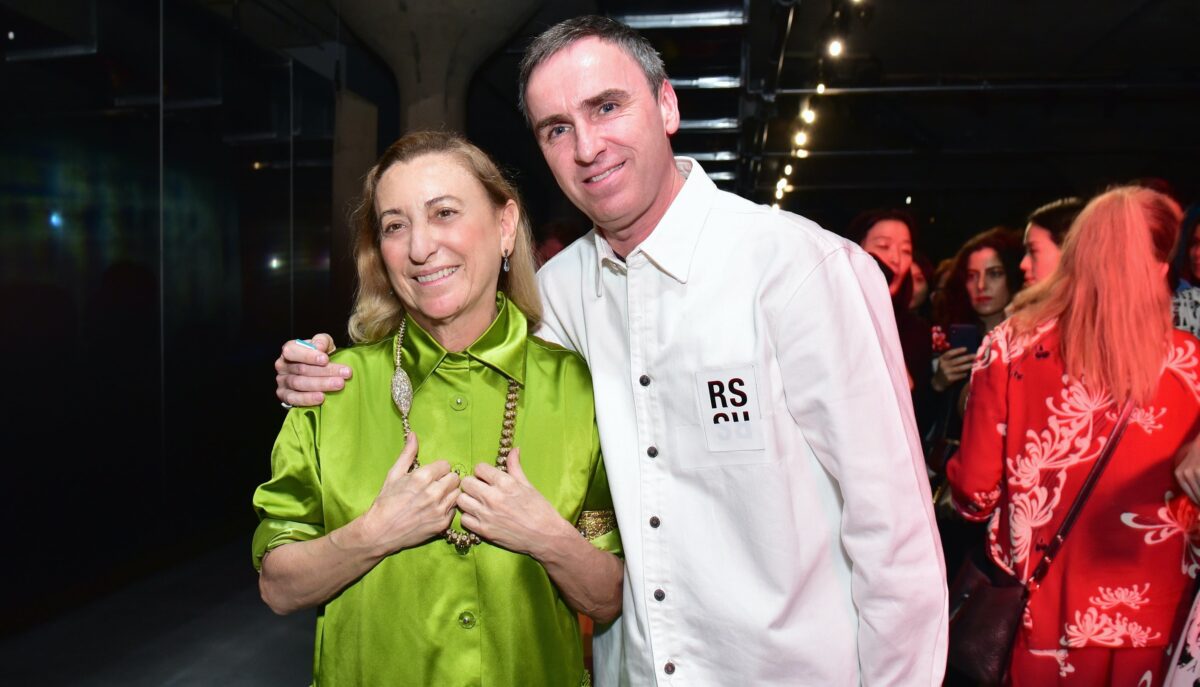
The news of a partnership between Simons, a highly-praised menswear designer who had stints at Jil Sander, Christian Dior and Calvin Klein, and Prada rattled the fashion industry, as the Italian fashion house had yet to look outside the family for creative control. The two designers have been long-time fans of each other’s work, and have been vocal about how the identify with each other. Simons has praised Prada’s mindset and artistic process, which famously does not involve any drawing, but rather talking and conceptualising ideas.
The partnership is a prime example of the fashion house looking forward and envisioning its next stage of evolution. Raf Simons has become a name quickly associated with today’s men’s streetwear market, and could potentially bring in new audiences for the fashion house. It is a collaboration in which they both value simplicity, originality and modernity.
The creative partnership is perhaps another answer to the question of succession, despite Prada vehemently denying that Miuccia Prada is looking to step down. However, Miuccia Prada is 71 years old, and Miuccia and Patrizio are undoubtedly looking for the next generation of talent to heir their Prada throne. With a legacy like Prada’s, it is difficult to envision someone else with creative control that has consistently transformed the fashion industry for the last four decades.
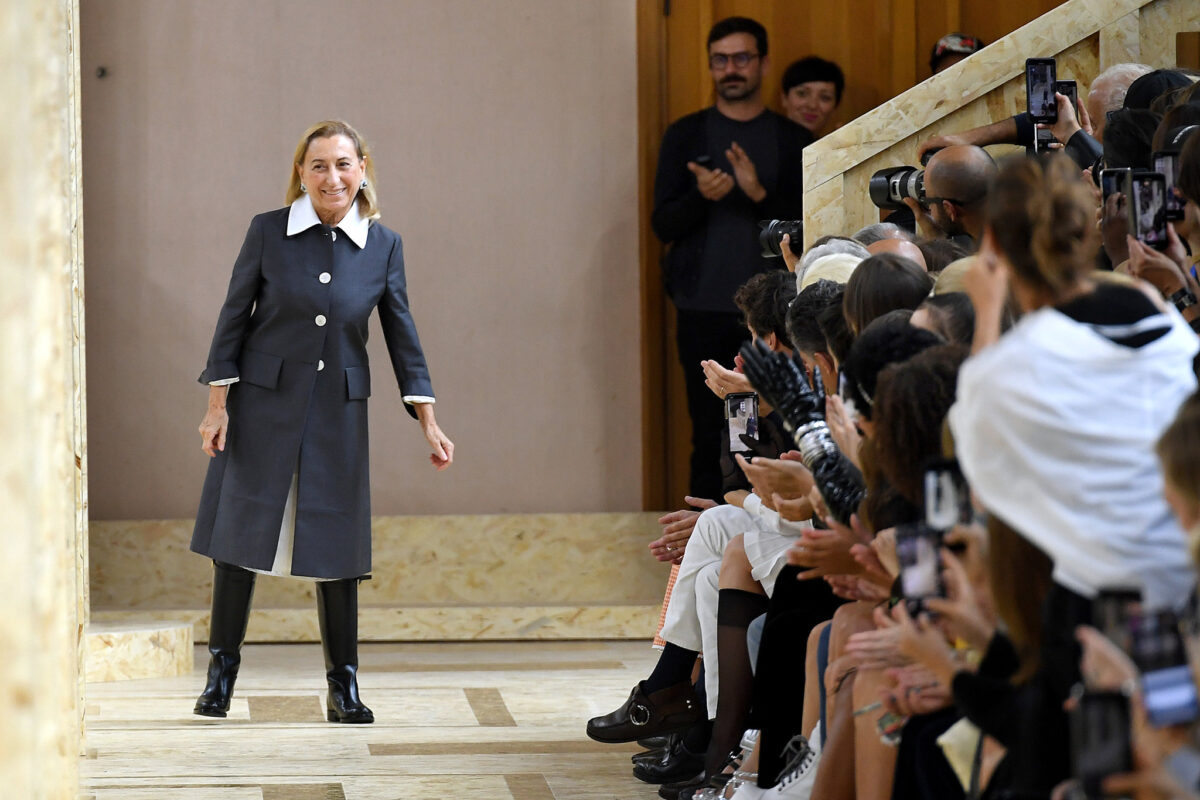
And also in addition to Raf Simons, there is also the scion, Lorenzo Bertelli, son of Prada Group Co-Chief Executives Miuccia and Patrizio, who has kept a low profile since joining the family business to lead marketing and communications back in September 2017. Now, the ex Rally driver and Prada scion, is also lining up on the starting grid to be a possible successor. Reports coming out of Prada HQ is that he is already starting to lay out a vision for the future of the Italian brand as it plays catch up with luxury peers under the co-creative direction of Mrs Prada and Raf Simons.
The beauty of Prada is in it’s penchant for artistry, and rule-breaking creativity, and the willingness to do what hasn’t been done before. These values have moulded the DNA of the Prada brand, and it is this DNA that has laid the fundamental groundwork for the fashion house, so it can continue to evolve, whilst keeping it’s essence in tact.
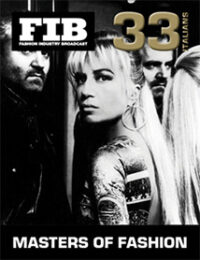
Discover more of Miuccia Prada’s story in Fashion Industry Broadcast’s Masters of Fashion Vol. 33 “Italians”. Available via Amazon – worldwide!
Subscribe to FIB’s Weekly Alchemy Report for your weekly dose of music, fashion and pop culture news!







